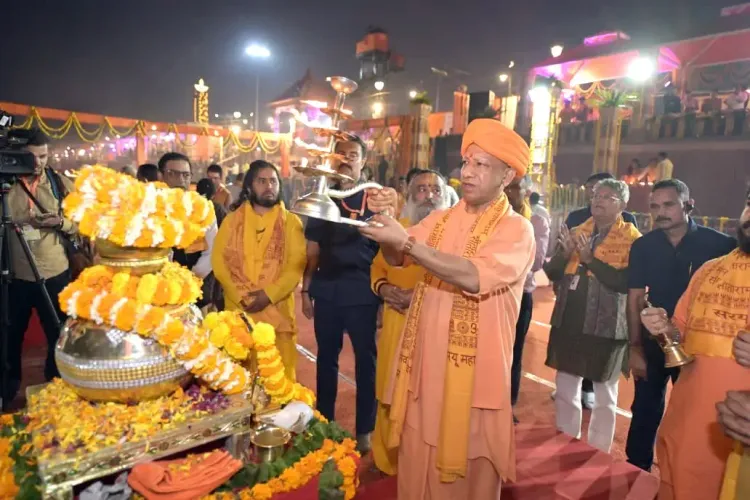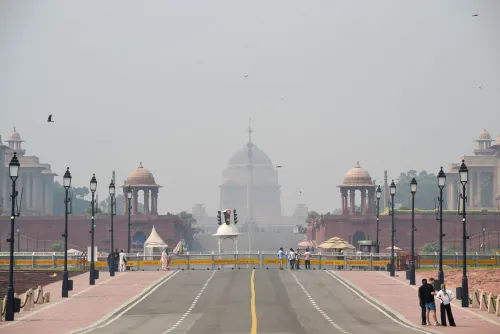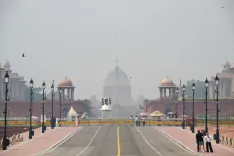How Did 1.51 Crore Lamps Illuminate Uttar Pradesh and 26 Lakh Dham in Ayodhya?

Synopsis
Key Takeaways
- 1.51 crore lamps illuminated Uttar Pradesh, showcasing collective faith.
- 26 lakh diyas lit in Ayodhya Dham, marking a historic event.
- Ayodhya reclaims its identity as India’s spiritual capital.
- Deepotsav symbolizes the endurance of Sanatan Dharma.
- Ayodhya attracts 6-10 crore devotees annually.
New Delhi, Oct 19 (NationPress) Uttar Pradesh Chief Minister Yogi Adityanath stated on Sunday that the magnificent display of 1.51 crore lamps throughout the state, featuring an unprecedented 26 lakh diyas in Ayodhya Dham, signifies the united spiritual determination of India.
During the coronation ceremony of Lord Ram at Ramkatha Park, he paid tribute to esteemed saints linked to the Shri Ram Janmabhoomi movement.
“In Ayodhya, every particle embodies respect, every lamp emanates kindness, and Lord Shri Ram resides in every soul,” the Chief Minister remarked, describing the Deepotsav as a vibrant emblem of the endurance of Sanatan Dharma through centuries of adversity.
Recalling that the Deepotsav commenced in 2017 with merely 1.71 lakh lamps, CM Yogi noted that the rise to over 26 lakh lamps today illustrates a national revival of faith and pride. He emphasized that Ayodhya, which was once called Faizabad and lost its identity, has now reclaimed its role as the spiritual capital of India and a global center of religious tourism.
Without naming political opponents, he criticized those who referred to Lord Ram as a myth and tried to hinder the Ram Temple movement.
“They fired bullets, and we illuminate with lamps. They sealed the temple, and today, Lord Ram resides in his divine sanctuary,” he stated, adding that those who once bowed to Mughal graves are now reluctant to accept invitations to Ram Lalla.
CM Yogi remarked that Prime Minister Narendra Modi fulfilled a historical promise by laying the temple's foundation and leading the Pran Pratishtha earlier this year.
“This is the triumph of devotion and the realization of the promises made by Ram bhakts across generations,” he affirmed.
Pointing out developments, he mentioned that Ayodhya now attracts six to ten crore devotees yearly and is being developed into a clean, modern, cultural, and emotional city that exemplifies the ideal of Ram Rajya—a place where no one suffers from poverty, sorrow, or deprivation.
“Today, Ayodhya stands as both a symbol of spiritual magnificence and a representation of a new, self-assured India,” he remarked.









